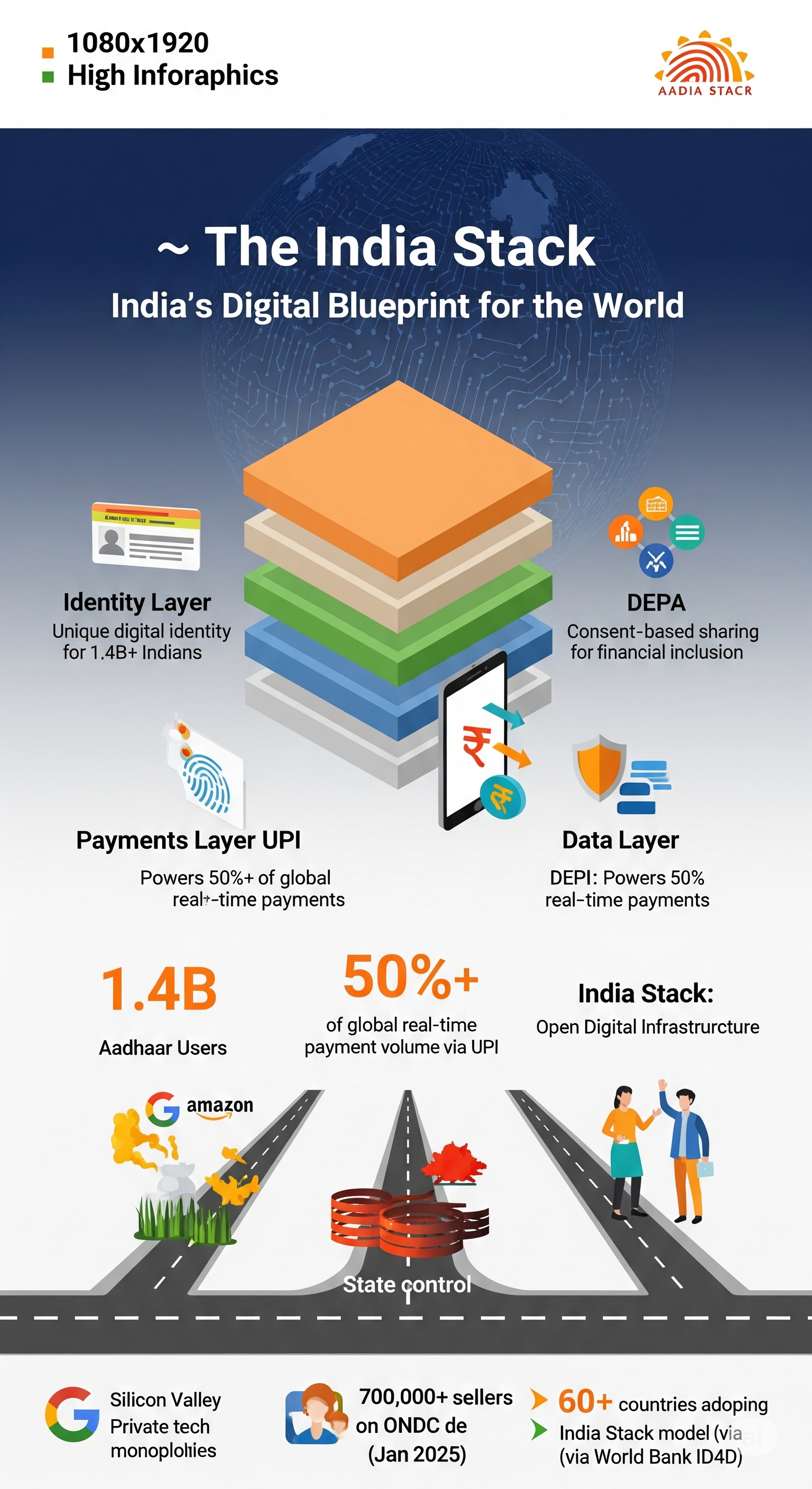🌐 Introduction: The Master Plan Behind India’s Digital Success

From street-side tea stalls to the highest echelons of global finance, the world has watched in awe as India achieved a series of stunning digital milestones. The Unified Payments Interface (UPI), for instance, now processes over 50% of the world’s real-time payment transactions by volume. But these achievements are not isolated events. They are interconnected pieces of a grand, deliberate strategy known as the India Stack.
The India Stack is a set of open-source, interoperable digital public goods (DPGs) that form the backbone of the country’s digital economy. It is a radical new approach to building national infrastructure—not with closed, proprietary platforms, but with open, inclusive protocols that have become India’s most powerful intellectual export.
🛠️ The Three Foundational Layers of the India Stack
At its core, the India Stack consists of three distinct but interconnected layers that enable presence-less, paperless, and cashless service delivery:
- 📇 Identity Layer (Aadhaar): This foundation provides a unique digital identity to over 1.3 billion Indians, allowing for secure and verifiable authentication across public and private services.
- 💸 Payments Layer (UPI): Built on the identity layer, UPI unbundled payments, creating a common language for money that allows any bank or fintech app to transact seamlessly and instantly with any other.
- 🔐 Data Layer (DEPA): The Data Empowerment and Protection Architecture (DEPA) gives individuals control over their own data. Through “account aggregators,” users can securely share their data with consent to access credit, insurance, and healthcare, revolutionizing access to financial services.
🇮🇳 A “Third Way” Beyond Silicon Valley and China
The India Stack represents a “third way” of building a digital economy. Unlike the U.S. model led by private tech monopolies or the Chinese model of centralized state control, India built digital highways (open public infrastructure) and invited private innovators to build services on top. This has fostered healthy competition, massive inclusion, and low-cost innovation across sectors.
🔗 The India Stack in Action: Connecting the Dots
The real-world impact of this layered approach is now visible across every major sector of the economy, tying together India’s greatest innovation stories:
- The same open-network philosophy that powered UPI is now transforming retail through the Open Network for Digital Commerce (ONDC), aiming to democratize e-commerce for millions of small sellers.
- This digital infrastructure has drastically lowered the cost of innovation, empowering a new generation of entrepreneurs and enabling startups from Tier-2 and Tier-3 cities to build world-class solutions for national and global markets.
- Though not a software stack, this public-good approach echoes the success of ISRO’s frugal innovation model, which has made access to space more affordable. It reflects the same national ethos of solving complex problems with homegrown, cost-effective technologies.
🌍 Conclusion: India’s Gift to the Digital World
The India Stack is more than a collection of APIs—it is a new operating system for a digital nation, built on principles of inclusion, openness, and innovation. Its success has sparked global interest. As of 2025, the World Bank’s ID4D initiative is actively supporting dozens of countries in developing similar digital ID programs, many directly inspired by Aadhaar.
As the world grapples with the power of Big Tech, the India Stack provides a powerful alternative: a democratic, open-source blueprint for digital public infrastructure that empowers citizens and fosters equitable growth.
📚 References
- ACI Worldwide: Prime Time for Real-Time Payments 2024 Report
- Unique Identification Authority of India (UIDAI) Official Website
- Bharat Newswire – UPI: India’s Digital Payments Revolution
- Bharat Newswire – ONDC: Democratizing E-Commerce
- Bharat Newswire – Tier-2 Indian Startups Changing the Game
- Bharat Newswire – ISRO’s Frugal Innovation Model
- World Bank ID4D (Identification for Development) Initiative